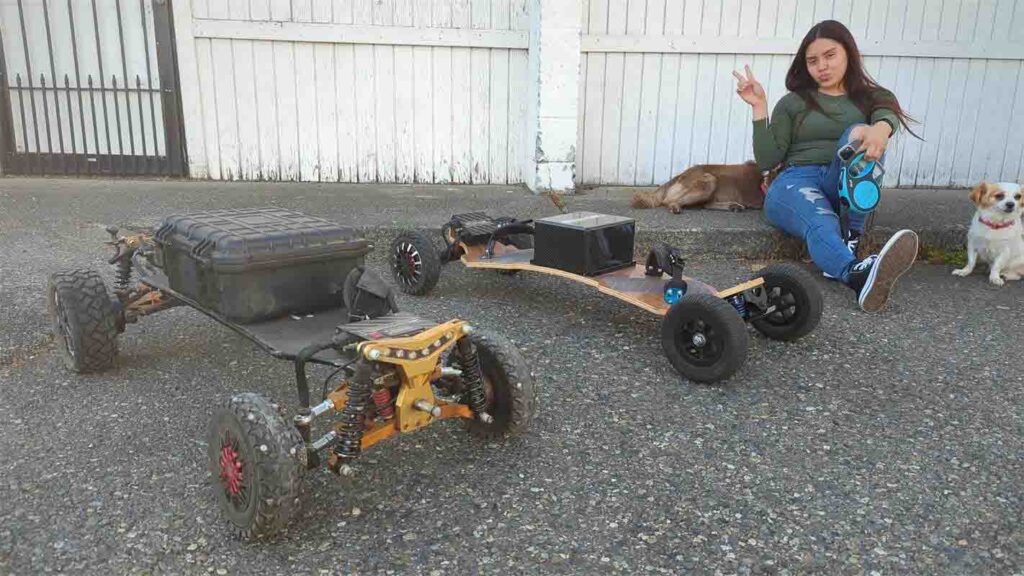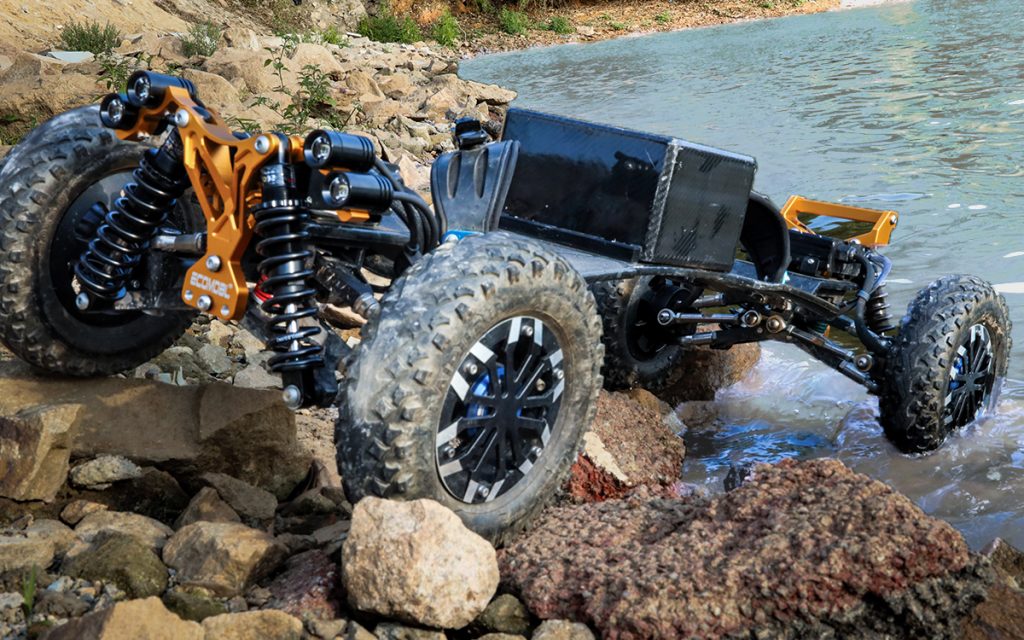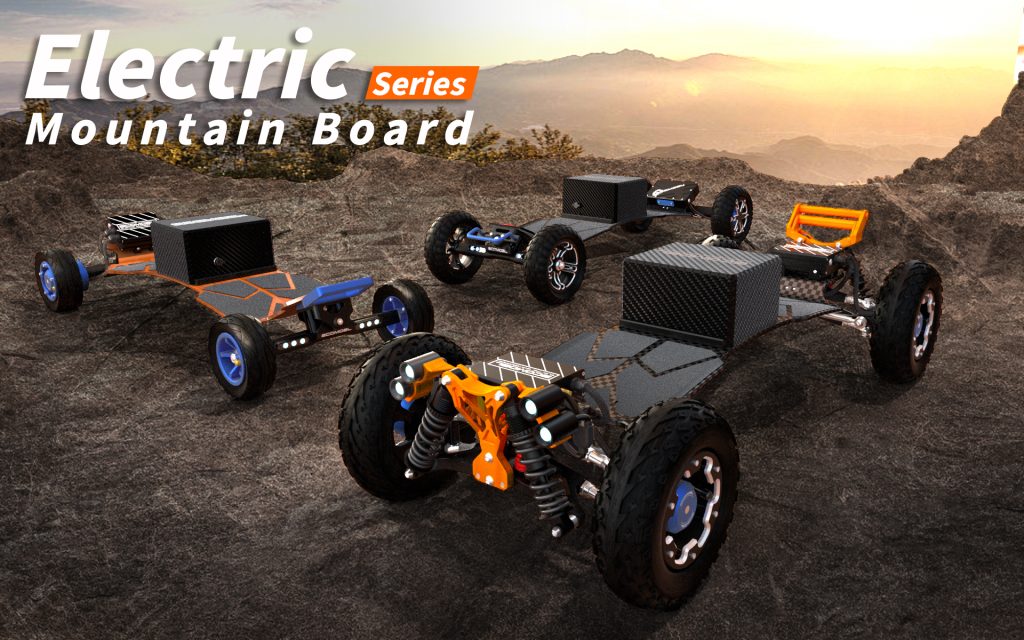Cities are noisy, crowded, and often stuck in traffic. But there’s a shift happening, small, quiet machines are weaving between the cars, bypassing gridlock, and using almost no energy to do it. Electric skateboards aren’t just for fun anymore. They’re becoming a serious commuting tool for people who want to move efficiently without polluting the air or burning fuel.
So, how green are they really?
Electric Skateboards: A Sustainable Mode of Transportation
That starts with the basics: what makes a vehicle sustainable in the first place? For electric skateboards, it comes down to simplicity. They consume minimal energy, produce no direct emissions, and avoid many of the inefficiencies built into traditional transport. For short-distance travel, few other options can match their low impact and flexibility.
A standard eco-friendly electric skateboard can travel 10–20 miles on a single charge, often using less power than doing a load of laundry. And there are no fumes, no idle engines, and no wasted time circling for parking. In cities with tight spaces and short trips, they replace cars better than bikes or scooters.
The Role of Electric Skateboards in Reducing Traffic Congestion and Air Pollution
While electric skateboards clearly reduce personal emissions and energy use, their impact doesn’t stop at the individual level. As more riders take to the streets, the collective effect begins to shift how cities move, breathe, and function. From easing traffic flow to cutting down on smog-heavy commutes, these small boards play a surprising role in addressing some of urban mobility’s biggest challenges.

Cutting Cars from Short Trips
According to the U.S. Department of Energy, over 59% of vehicle trips are under six miles. These trips rarely require a car’s full capabilities but still produce emissions, clog streets, and create parking demand. Swapping even a portion of those trips with green commute electric skateboards can dramatically ease pressure on traffic systems.
- One person on a board equals one less car at a red light.
- One smooth glide to the office avoids 20 minutes of bumper-to-bumper idling.
- One compact board stored under a desk eliminates the need for a parking space.
The math may seem small per rider—but scaled across a city, it means thousands fewer cars on the road every morning.
Reducing Idling and Emissions
Short car trips are also the most polluting, especially in cold starts. Gasoline engines release a higher amount of carbon monoxide, NOx, and hydrocarbons during the first few minutes of driving. In contrast, an electric skateboard has no tailpipe, no idling, no warm-up time—just direct, clean movement.
By using electric skateboards for these high-impact, short-range trips, cities can:
- Reduce peak-hour carbon emissions
- Lower concentrations of smog-forming pollutants
- Decrease localized noise pollution in residential areas
In fact, studies from MIT and NABSA show micromobility (including electric skateboards) can significantly cut urban CO₂ emissions by replacing car trips—saving thousands of tons of carbon annually across U.S. cities.
Freeing Urban Space
Cars don’t just pollute when moving—they take up a lot of room even when parked. The average car occupies about 160 square feet of urban space. In comparison, an electric skateboard takes up less than 3 square feet and can be brought inside a café, an office, or even a classroom.
This space difference has a real impact:
- Fewer parking lots are needed in walkable areas
- Bike and board lanes can be added without major road overhauls
- Sidewalks remain open and safe since boards don’t idle or park curbside
Cities that support electric skateboard commuting end up reclaiming space for people: wider sidewalks, more greenery, and public spaces that aren’t dominated by cars.
Creating Smarter Flow
Choosing to commute with an electric skateboard doesn’t mean you have to use it all the time. You can easily make it part of your daily routine by combining it with public transportation. For example:
- Skate to the nearest bus stop or subway (2–3 minutes),
- Ride public transit,
- Then skate the last mile to their destination.
This flexibility reduces car dependency without needing massive infrastructure changes. Boards simply slide into existing systems, creating smarter movement across urban areas.

Energy Consumption and Efficiency: How Electric Skateboards Stack Up
That broader shift also raises another question: how much energy does this mode of travel actually require, and how does it compare to the systems it’s starting to replace?
Remarkable Energy Efficiency
Most people never consider how much energy it takes to move one person a mile. A car is massively inefficient for short solo trips. An electric skateboard, on the other hand, is one of the leanest vehicles ever built for city use.
It consumes roughly 10–20 watt-hours per mile—compare that to an electric car’s 250+ Wh per mile or a gas car’s equivalent of over 1500 Wh per mile. (That’s 12-25 times more efficient than an electric car and over 75 times more efficient than a gas vehicle!)
The batteries on a sustainable electric skateboard are small, but thanks to compact motors and lightweight frames, they get you far on very little. You’re not hauling steel. You’re gliding with purpose.
The Benefits of Regenerative Braking
Efficiency doesn’t stop when the wheels slow down. In most vehicles, braking simply turns kinetic energy into wasted heat through friction. But many electric skateboards are equipped with regenerative braking, a system that converts that motion back into usable electricity.
Here’s how it works: when you apply the brake, the motor temporarily reverses function, acting as a generator. Instead of drawing power from the battery, it creates resistance by generating current—feeding a portion of that energy back into the battery pack. This process is especially effective during downhill rides or frequent stop-and-go traffic.
So what does regenerative braking actually do in real life?
When you use an electric skateboard for daily city commuting, regenerative braking can help you recover energy and increase your range by about 10–20%, depending on the terrain.
And it also gives you:
- Less wear on your brakes – the motor helps slow you down, so the brake pads last longer
- Smoother stops – the ride feels more controlled and comfortable
- Better control – some high-end boards let you adjust how strong the braking feels, which is useful on hills or in wet weather.
And regenerative braking isn’t new. It’s a refined energy system drawn from electric and hybrid vehicles. By adapting this proven automotive technology to personal transport, electric skateboards become not only more efficien, but part of a larger shift toward smarter, cleaner mobility.

Sustainable Materials and Manufacturing Processes
Efficiency during use tells the main part of the story. And the rest lies in how the product is made—its materials, durability, and the resources behind its production. For electric skateboards, these choices quietly shape their overall environmental impact, from the first ride to the end of their lifecycle.
Material Choices That Last Longer
More electric skateboard makers are moving away from low-cost, short-lifespan components that end up in landfills after a few years. Instead, they’re focusing on structural longevity and material responsibility. Common updates include deck layers made from sustainably harvested maple or bamboo, selected for both flexibility and fracture resistance. Casings and enclosures are often made of impact-resistant ABS or PC polymers, many of which are recyclable at the end of life.
At Ecomobl, these choices go deeper than appearances. Decks are reinforced with fiberglass or carbon fiber laminates, increasing durability without adding unnecessary weight. Battery housings are modular, allowing individual cells or BMS units to be serviced or upgraded without discarding the entire pack. Electrical components are assembled with universal fasteners, simplifying disassembly and part replacement. Even the outer packaging uses corrugated recycled fiberboard, reducing the need for foam or single-use plastics during shipping.
Smaller Form, Lower Manufacturing Impact
Beyond material selection, the manufacturing approach itself determines the environmental footprint. This design approach doesn’t eliminate environmental cost, but it slows it down.
Compared to cars or motorbikes, electric skateboards also require far fewer raw materials, simpler manufacturing lines, and lower energy inputs per unit. There are no combustion engines, no transmission systems, no complex exhaust routing. This keeps the carbon footprint of production relatively low, especially when paired with cleaner assembly methods.
Some makers, including Ecomobl, have begun adopting batch-optimized CNC machining, low-temperature composite molding, and energy-monitored assembly lines. These processes reduce waste during fabrication and lower overall power consumption on the factory floor. Because electric skateboards don’t rely on thousands of moving parts, they also create less industrial scrap and require fewer precision tolerances, which translates to lower tooling and calibration emissions.
While no production method is entirely clean, the manufacturing demands of a lightweight electric skateboard are a fraction of those tied to larger vehicles—both in material scope and in energy intensity.
Impact on Urban Environments and Lifestyle
Cleaner, longer-lasting products are a meaningful step toward sustainability. Their impact grows even more visible once they enter daily life in how people move, how space is shared, and how cities begin to adapt.
- They reduce waste and last longer.
- A well-built board doesn’t need frequent repairs or replacement—you save money and avoid waste over time.
- They make daily rides calmer and cleaner.
- A quick store run becomes a quiet, smooth ride. No engine noise, no gas smell, no traffic stress.
- They give you more freedom in your routine.
- You don’t need to stop for gas. You don’t need to fight for parking. You can go directly to where you need to be—fast and easy.
- They help make cities more people-friendly.
- As more riders take up less space, bike lanes expand, traffic thins out, and sidewalks become safer.
Yes, the electric skateboard’s environmental benefits aren’t just about carbon; they’re about giving space and freedom back to the individuals who live there.

Final Thoughts
An electric skateboard won’t solve the climate crisis alone. Even so, it shifts the way people move, using less energy, making less noise, and producing fewer emissions. In cities shaped by traffic and smog, small choices can create meaningful change. Ecomobl crafts electric skateboards with long-term use, real-world function, and responsible materials.
For anyone ready to step into cleaner commuting, the way forward is already paved, compact, quiet, and ready to ride.




